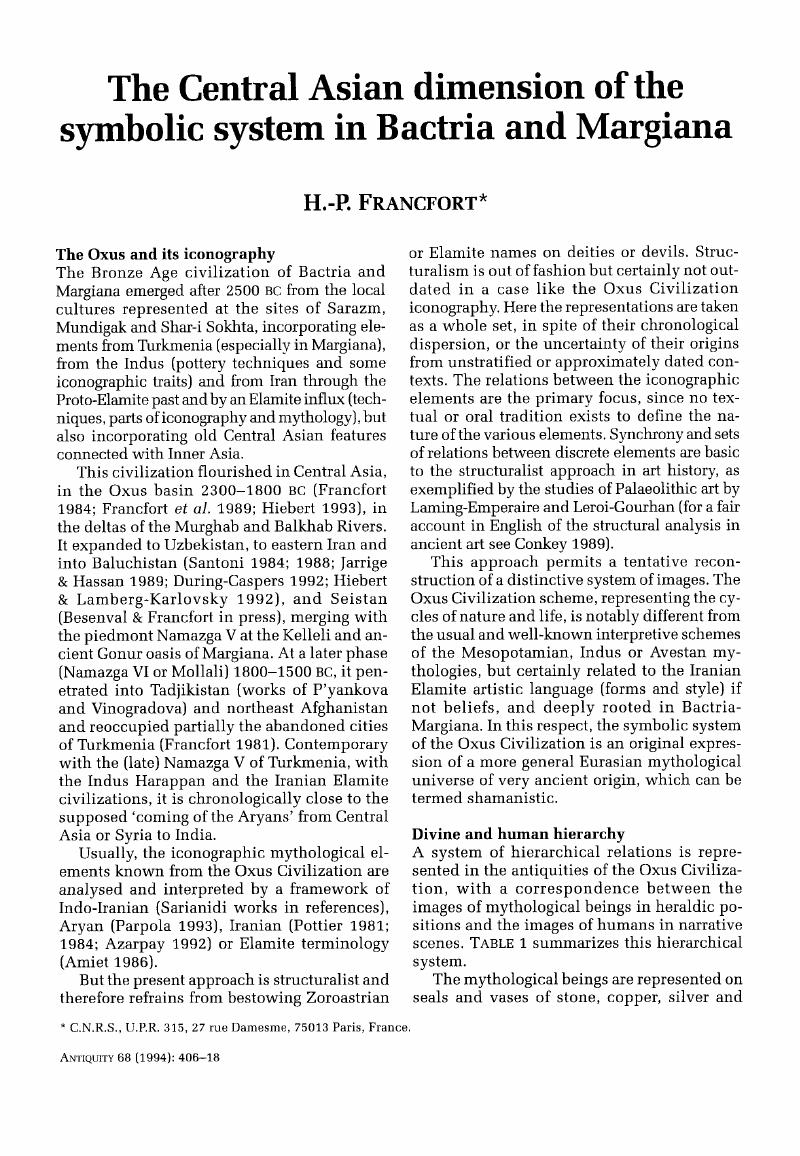Crossref Citations
This article has been cited by the following publications. This list is generated based on data provided by Crossref.
2012.
A Companion to the Archaeology of the Ancient Near East.
p.
1117.
Luneau, Élise
2012.
Les marqueurs archéologiques du pouvoir.
p.
221.
Luneau, Élise
2015.
Les relations de genre en Asie centrale protohistorique : redéfinition et discussion.
Les Nouvelles de l'archéologie,
p.
28.
Rouse, Lynne M.
and
Cerasetti, Barbara
2018.
Mixing metaphors: sedentary-mobile interactions and local-global connections in prehistoric Turkmenistan.
Antiquity,
Vol. 92,
Issue. 363,
p.
674.
Francfort, Henri-Paul
2019.
The Iranian Plateau during the Bronze Age.
p.
247.
Vahdati, Ali A.
Biscione, Raffaele
La Farina, Riccardo
Mashkour, Marjan
Tengberg, Margareta
Fathi, Homa
and
Mohaseb, Fatemeh Azadeh
2019.
The Iranian Plateau during the Bronze Age.
p.
179.
Pittman, Holly
2019.
The Iranian Plateau during the Bronze Age.
p.
267.
Rossi, Paola Maria
2019.
Áhir budhníyaḥ and bhūmidundubhiḥ: The serpent of the deep and the earth-drum. A hypothesis of etymological and/or cultural connections.
Lingua Posnaniensis,
Vol. 61,
Issue. 2,
p.
107.
Gharehkhani, Zahara
2020.
EL CULTO A LOS ÁRBOLES EN EL ANTIGUO IRÁN COMO REFLEJO DEL CHAMANISMO IRANIO.
ISIMU,
Vol. 23,
Issue. ,
p.
117.
Rouse, Lynne M.
2020.
Silent partners: archaeological insights on mobility, interaction and civilization in Central Asia’s past.
Central Asian Survey,
Vol. 39,
Issue. 3,
p.
398.
Nikolsky, Aleksey
Alekseyev, Eduard
Alekseev, Ivan
and
Dyakonova, Varvara
2020.
The Overlooked Tradition of “Personal Music” and Its Place in the Evolution of Music.
Frontiers in Psychology,
Vol. 10,
Issue. ,
Rouse, Lynne M.
Woldekiros, Helina S.
and
Cerasetti, Barbara
2022.
Faunal remains from Ojakly, a Late Bronze Age mobile pastoralist campsite in the Murghab region, Turkmenistan.
Journal of Archaeological Science: Reports,
Vol. 44,
Issue. ,
p.
103531.
Garehkhani, Zahara
2024.
Criaturas híbridas de la Persia preislámica. Reflexiones y simbolismo.
ISIMU,
Vol. 26,
Issue. ,
p.
79.



